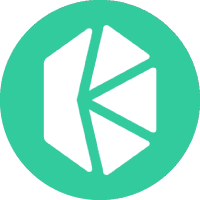Bitget:日次取引量の世界ランキングでトップ4にランクイン!
BTCマーケットシェア61.04%
Bitgetの新規上場 : Pi
BTC/USDT$103669.51 (+1.04%)恐怖・強欲指数73(強欲)
アルトコインシーズン指数:0(ビットコインシーズン)
ビットコイン現物ETFの純流入総額(-$91.4M(1日)、+$834.7M(7日))。6,200 USDT相当の新規ユーザー向けウェルカムギフトパッケージ。今すぐ獲得する
Bitgetアプリでいつでもどこでも取引しましょう今すぐダウンロードする
Bitget:日次取引量の世界ランキングでトップ4にランクイン!
BTCマーケットシェア61.04%
Bitgetの新規上場 : Pi
BTC/USDT$103669.51 (+1.04%)恐怖・強欲指数73(強欲)
アルトコインシーズン指数:0(ビットコインシーズン)
ビットコイン現物ETFの純流入総額(-$91.4M(1日)、+$834.7M(7日))。6,200 USDT相当の新規ユーザー向けウェルカムギフトパッケージ。今すぐ獲得する
Bitgetアプリでいつでもどこでも取引しましょう今すぐダウンロードする
Bitget:日次取引量の世界ランキングでトップ4にランクイン!
BTCマーケットシェア61.04%
Bitgetの新規上場 : Pi
BTC/USDT$103669.51 (+1.04%)恐怖・強欲指数73(強欲)
アルトコインシーズン指数:0(ビットコインシーズン)
ビットコイン現物ETFの純流入総額(-$91.4M(1日)、+$834.7M(7日))。6,200 USDT相当の新規ユーザー向けウェルカムギフトパッケージ。今すぐ獲得する
Bitgetアプリでいつでもどこでも取引しましょう今すぐダウンロードする



Solordiの価格SOLO
未上場
決済通貨:
JPY
データはサードパーティプロバイダーから入手したものです。このページと提供される情報は、特定の暗号資産を推奨するものではありません。上場されている通貨の取引をご希望ですか? こちらをクリック
¥0.01467-0.61%1D
価格チャート
Solordiの価格チャート(SOLO/JPY)
最終更新:2025-05-14 07:03:39(UTC+0)
時価総額:--
完全希薄化の時価総額:--
24時間取引量:--
24時間取引量 / 時価総額:0.00%
24時間高値:¥0.01464
24時間安値:¥0.01440
過去最高値:¥2.3
過去最安値:¥0.002107
循環供給量:-- SOLO
総供給量:
1,000,000,000SOLO
流通率:0.00%
最大供給量:
--SOLO
BTCでの価格:2.26 BTC
ETHでの価格:0.{7}3730 ETH
BTC時価総額での価格:
--
ETH時価総額での価格:
--
コントラクト:
J8cKU4...rxz6ax8(Solana)
もっと
Solordiに投票しましょう!
注:この情報はあくまでも参考情報です。
SolordiのAI分析レポート
本日の暗号資産市場のハイライトレポートを見る
本日のSolordiの現在価格(JPY)
現在、Solordiの価格は¥0.01467 JPYで時価総額は¥0.00です。Solordiの価格は過去24時間で0.61%下落し、24時間の取引量は¥0.00です。SOLO/JPY(SolordiからJPY)の交換レートはリアルタイムで更新されます。
Solordiの価格履歴(JPY)
Solordiの価格は、この1年で-95.11%を記録しました。直近1年間のJPY建ての最高値は¥0.3944で、直近1年間のJPY建ての最安値は¥0.009630でした。
時間価格変動率(%) 最低価格
最低価格 最高価格
最高価格 
 最低価格
最低価格 最高価格
最高価格 
24h-0.61%¥0.01440¥0.01464
7d+18.70%¥0.01213¥0.01464
30d+14.41%¥0.01205¥0.01464
90d-38.61%¥0.009630¥0.02383
1y-95.11%¥0.009630¥0.3944
すべての期間-88.20%¥0.002107(2023-12-22, 1年前 )¥2.3(2024-03-09, 1年前 )
Solordiの最高価格はいくらですか?
Solordiの過去最高値(ATH)は¥2.3 JPYで、2024-03-09に記録されました。SolordiのATHと比較すると、Solordiの現在価格は99.36%下落しています。
Solordiの最安価格はいくらですか?
Solordiの過去最安値(ATL)は¥0.002107 JPYで、2023-12-22に記録されました。SolordiのATLと比較すると、Solordiの現在価格は596.30%上昇しています。
Solordiの価格予測
SOLOの買い時はいつですか? 今は買うべきですか?それとも売るべきですか?
SOLOを買うか売るかを決めるときは、まず自分の取引戦略を考える必要があります。長期トレーダーと短期トレーダーの取引活動も異なります。BitgetSOLOテクニカル分析は取引の参考になります。
SOLO4時間ごとのテクニカル分析によると取引シグナルは強い買い推奨です。
SOLO1日ごとのテクニカル分析によると取引シグナルは購入です。
SOLO1週間ごとのテクニカル分析によると取引シグナルは売却です。
2026年のSOLOの価格はどうなる?
SOLOの過去の価格パフォーマンス予測モデルによると、SOLOの価格は2026年に¥0.01736に達すると予測されます。
2031年のSOLOの価格はどうなる?
2031年には、SOLOの価格は+1.00%変動する見込みです。 2031年末には、SOLOの価格は¥0.01632に達し、累積ROIは+13.34%になると予測されます。
よくあるご質問
Solordiの現在の価格はいくらですか?
Solordiのライブ価格は¥0.01(SOLO/JPY)で、現在の時価総額は¥0 JPYです。Solordiの価値は、暗号資産市場の24時間365日休みない動きにより、頻繁に変動します。Solordiのリアルタイムでの現在価格とその履歴データは、Bitgetで閲覧可能です。
Solordiの24時間取引量は?
過去24時間で、Solordiの取引量は¥0.00です。
Solordiの過去最高値はいくらですか?
Solordi の過去最高値は¥2.3です。この過去最高値は、Solordiがローンチされて以来の最高値です。
BitgetでSolordiを購入できますか?
はい、Solordiは現在、Bitgetの取引所で利用できます。より詳細な手順については、お役立ちの購入方法 ガイドをご覧ください。
Solordiに投資して安定した収入を得ることはできますか?
もちろん、Bitgetは戦略的取引プラットフォームを提供し、インテリジェントな取引Botで取引を自動化し、利益を得ることができます。
Solordiを最も安く購入できるのはどこですか?
戦略的取引プラットフォームがBitget取引所でご利用いただけるようになりました。Bitgetは、トレーダーが確実に利益を得られるよう、業界トップクラスの取引手数料と流動性を提供しています。
Solordiの集中度別保有量
大口
投資家
リテール
Solordiの保有時間別アドレス
長期保有者
クルーザー
トレーダー
coinInfo.name(12)のリアル価格チャート

Solordiのグローバル価格
現在、Solordiは他の通貨の価値でいくらですか?最終更新:2025-05-14 07:03:39(UTC+0)
SOLO から MXN
Mexican Peso
Mex$0SOLO から GTQGuatemalan Quetzal
Q0SOLO から CLPChilean Peso
CLP$0.09SOLO から UGXUgandan Shilling
Sh0.36SOLO から HNLHonduran Lempira
L0SOLO から ZARSouth African Rand
R0SOLO から TNDTunisian Dinar
د.ت0SOLO から IQDIraqi Dinar
ع.د0.13SOLO から TWDNew Taiwan Dollar
NT$0SOLO から RSDSerbian Dinar
дин.0.01SOLO から DOPDominican Peso
RD$0.01SOLO から MYRMalaysian Ringgit
RM0SOLO から GELGeorgian Lari
₾0SOLO から UYUUruguayan Peso
$0SOLO から MADMoroccan Dirham
د.م.0SOLO から OMROmani Rial
ر.ع.0SOLO から AZNAzerbaijani Manat
₼0SOLO から KESKenyan Shilling
Sh0.01SOLO から SEKSwedish Krona
kr0SOLO から UAHUkrainian Hryvnia
₴0- 1
- 2
- 3
- 4
- 5
もっと購入する
暗号資産はどこで購入できますか?
動画セクション - 素早く認証を終えて、素早く取引へ

Bitgetで本人確認(KYC認証)を完了し、詐欺から身を守る方法
1. Bitgetアカウントにログインします。
2. Bitgetにまだアカウントをお持ちでない方は、アカウント作成方法のチュートリアルをご覧ください。
3. プロフィールアイコンにカーソルを合わせ、「未認証」をクリックし、「認証する」をクリックしてください。
4. 発行国または地域と身分証の種類を選択し、指示に従ってください。
5. 「モバイル認証」または「PC」をご希望に応じて選択してください。
6. 個人情報を入力し、身分証明書のコピーを提出し、自撮りで撮影してください。
7. 申請書を提出すれば、本人確認(KYC認証)は完了です。
Bitgetを介してオンラインでSolordiを購入することを含む暗号資産投資は、市場リスクを伴います。Bitgetでは、簡単で便利な購入方法を提供しており、取引所で提供している各暗号資産について、ユーザーに十分な情報を提供するよう努力しています。ただし、Solordiの購入によって生じる結果については、当社は責任を負いかねます。このページおよび含まれる情報は、特定の暗号資産を推奨するものではありません。
Solordiの評価
コミュニティからの平均評価
4.4
このコンテンツは情報提供のみを目的としたものです。
Bitgetインサイト
JamesAnan
7時
$OBOL Tokenomics Breakdown: Built to Hold or Flip?
The $OBOL token, central to the Obol Network—a project focused on distributed validator technology (DVT) for Ethereum staking—features tokenomics that attempt to balance long-term alignment with short-term incentives. Whether it’s built to hold or flip depends on your risk appetite, trading horizon, and how you view the project's strategic vision.
Here’s a breakdown of $OBOL tokenomics with realistic insight:
1. Supply Structure & Emission Schedule
$OBOL has a fixed maximum supply, but how that supply is distributed and released matters greatly. Typically, with Web3 infrastructure projects like Obol, you see:
A meaningful percentage allocated to the team and early investors, usually with multi-year vesting (often 1-year cliff + 3–4 years linear).
An ecosystem or community fund aimed at protocol growth and incentivizing DVT adoption.
Airdrops or testnet rewards, designed to bootstrap decentralization and community trust.
If token unlocks are front-loaded or poorly timed, early investors may dominate market liquidity, making it better for flipping. But if vesting is drawn out and ecosystem incentives are structured to reward long-term participation (e.g., node operators), that favors holding.
2. Utility: Staking, Governance, and Coordination
$OBOL is not just a passive governance token. It’s expected to be used for:
Participating in governance decisions for protocol upgrades and validator coordination mechanisms.
Potentially staking to secure the network or to align incentives within operator clusters.
Economic coordination between distributed validator operators, especially in ETH staking scenarios.
This real-world utility, tied to Ethereum’s staking infrastructure, gives $OBOL long-term holding potential—particularly if Ethereum continues its transition toward decentralization and Obol becomes a core part of staking architecture.
3. Ecosystem Dependency
The token’s long-term value is heavily dependent on DVT adoption. If Ethereum staking protocols like Lido, Rocket Pool, or solo stakers begin to integrate Obol’s validator middleware, it could become a critical infrastructure layer. In that case, holding becomes compelling. But if adoption is slow or competitors gain ground, $OBOL’s value may flatten, making short-term trades more logical.
4. Liquidity and Exchange Listings
New listings often generate volatile price action, favoring flippers. If $OBOL was recently launched or unlocked, the first few weeks or months might present high upside and downside swings, good for traders but less predictable for holders.
Conclusion
$OBOL is designed to be held by those who believe in Ethereum’s long-term decentralization and the role of distributed validator tech. Its tokenomics—if executed with slow vesting, ecosystem incentives, and growing protocol utility—favor long-term alignment. But until real adoption data confirms the vision, it remains a tempting short-term flip for opportunistic traders.
Bottom line:
Built to hold for ETH-aligned stakers and infra believers.
Viable to flip in early stages due to volatility, listings, and low circulating supply.
HOLD-4.89%
CORE-0.11%
Habibusulaiman
10時
$OBOL
Title: “Obol: A New Standard for Secure Ethereum Staking”
The future of Ethereum staking is distributed.
Obol Network uses DVT (Distributed Validator Technology) to allow multiple operators to control a single validator key—together.
This makes validators:
More fault-tolerant
Harder to attack
Easier for solo stakers to manage
Think of it like staking with backup systems & teammates.
Obol is not just a project—it’s part of the next-gen Ethereum infrastructure.
Will you run a DVT validator?
OBOL-2.36%
SOLO+2.31%
MuazuAminuladan
10時
$OBOL
Title: “What is Obol Network? The Future of Ethereum Staking”
Insight 1:
Ever wondered how to make Ethereum staking more secure & decentralized? Meet Obol Network—pioneering Distributed Validator Technology (DVT).
#Obol #Ethereum #Staking
Insight 2:
DVT = Multiple nodes operating a single validator. This means no single point of failure—if one node goes down, the validator still runs smoothly.
Insight 3:
Why care?
Higher uptime
Lower slashing risk
Better decentralization
Perfect for solo stakers & DAOs
Insight 4:
Obol empowers anyone to run resilient validators without relying on centralized infra. It’s staking done right.
Insight 5:
DVT might just be the most important upgrade for Ethereum validators since the Merge. Are you paying attention?
OBOL-2.36%
SOLO+2.31%
BGUSER-M3LY1BQW
17時
$OBOL Network is a project focused on enabling distributed validator technology (DVT) for Ethereum staking. Its core mission is to make Ethereum staking more decentralized, fault-tolerant, and secure by allowing validator duties to be shared among multiple node operators. Here’s a breakdown of $OBOL future plans regarding decentralization:
1. Expansion of Distributed Validators
$OBOL is actively working on enabling a wider rollout of Distributed Validators (DVs), which allow multiple independent parties to collectively run a single Ethereum validator. This reduces centralization risks because no single operator has full control.
• Goal: Replace solo or centralized validators (run by exchanges or large staking providers) with DVs operated by a diverse set of parties.
• Impact: Increases resilience and censorship resistance of Ethereum.
2. Mainnet Launch of Charon
Charon is $OBOL DVT middleware – a coordination client that enables DVs to function. Its mainnet launch is a big step toward real-world deployment of decentralized validators.
• Mainnet readiness includes improvements to robustness, usability, and security.
• It supports threshold signing, fault tolerance, and multi-party validator responsibilities.
3. Open Participation & Community Involvement
$OBOL is moving toward open participation, meaning it will empower anyone to set up or join a distributed validator cluster.
• Decentralized cluster formation: Participants will form clusters permissionlessly.
• Improved tooling: Making it easier for less-technical users to set up DVs.
4. Ecosystem Partnerships
$OBOL collaborating with staking protocols like Lido, Rocket Pool, and institutional staking services to integrate DVT.
• Goal: DVT becomes a standard component of Ethereum validator infrastructure.
• Broader validator set: More diverse operators from different geographies and communities.
5. Governance and Protocol Decentralization
As $OBOL rows, it plans to decentralize its own governance.
• Community governance models: Inspired by other Ethereum-native protocols.
• Treasury decentralization: Long-term plans include handing off protocol funds and upgrades to the community.
⸻
In summary, $OBOL Network’s decentralization efforts focus on empowering validator diversity through DVT, enabling permissionless participation, launching secure middleware like Charon, and collaborating across the Ethereum staking ecosystem—all aimed at making Ethereum staking safer and more decentralized.
CORE-0.11%
OBOL-2.36%

omeizaElijah
19時
$OBOL
# **$OBOL Future Outlook: Next Trading Plans & Strategies**
## **🔍 Introduction**
$OBOL (Obol Network) is an emerging player in Ethereum's staking ecosystem, focusing on **Distributed Validator Technology (DVT)**. As Ethereum transitions to full Proof-of-Stake (PoS), $OBOL could become a critical infrastructure component.
This guide covers:
✅ **$OBOL’s Bullish & Bearish Catalysts**
✅ **Short-Term vs. Long-Term Outlook**
✅ **Optimal Trading Strategies**
✅ **Risk Management & Exit Plans**
---
## **📈 Bullish Factors Supporting $OBOL ’s Growth**
### **1. Ethereum’s Staking Evolution**
- **DVT solves key staking risks** (single-point failures, slashing).
- **EigenLayer integration potential** could boost demand.
### **2. Strong Backing & Credibility**
- Backed by **Coinbase Ventures, Pantera Capital, and Ethereum Foundation**.
- Team includes **Ethereum core contributors**.
### **3. Growing Adoption**
- Used by **Lido, Rocket Pool, and solo stakers**.
- **More validators = higher $OBOL utility**.
### **4. Tokenomics & Scarcity**
- **Fixed supply** (no inflation) if properly structured.
- **Staking rewards could lock up supply**.
### **5. Crypto Bull Market Tailwinds**
- If ETH surges, staking-related tokens like $OBOL could outperform.
---
## **📉 Bearish Risks for $OBOL **
### **1. Competition (Lido, Rocket Pool, SSV Network)**
- Needs to capture market share quickly.
### **2. Regulatory Risks**
- SEC scrutiny on staking tokens (see $LDO, $RPL).
### **3. Technical Risks**
- **Slashing incidents** could erode trust.
- **Smart contract vulnerabilities**.
### **4. Token Unlock Dumps**
- Early investors may sell post-listing.
### **5. ETH Price Decline**
- Bear markets reduce staking activity.
---
## **📅 Price Outlook: Short-Term vs. Long-Term**
| Timeframe | Outlook | Key Drivers |
|-----------|---------|-------------|
| **1-3 Months** | Volatile (Neutral) | Exchange listings, EigenLayer news |
| **6-12 Months** | Bullish (If adopted) | Mainnet traction, ETH upgrades |
| **1-3 Years** | High-Risk High-Reward | Ethereum staking dominance |
---
## **💡 Trading Strategies**
### **1. Short-Term Trading**
- **Buy:** Dips below $X.XX (key support)
- **Sell:** 20-30% pumps (resistance levels)
- **Catalysts:** Exchange listings, ETH upgrades
### **2. Mid-Term Accumulation**
- **DCA:** Buy weekly/monthly
- **Stake:** If rewards are attractive
### **3. Long-Term Hold**
- **Hold if:** DVT becomes industry standard
- **Exit if:** Competitors dominate
---
## **⚠️ Risk Management**
- **Stop-Loss:** 15-20% below entry
- **Take-Profit:** 25% at 2x, 25% at 3x
- **Watch:** ETH price, validator growth
---
## **🔮 Final Verdict**
**✅ Buy $OBOL If:**
- You believe in Ethereum’s staking future
- Comfortable with mid-high risk
**❌ Avoid If:**
- Prefer stable assets
- Expect quick 10x
**Key Make-or-Break Factor:**
Ethereum’s adoption of DVT solutions.
X-0.53%
HOLD-4.89%
関連資産
最近追加された暗号資産
最も最近追加された暗号資産
同等の時価総額
すべてのBitget資産の中で、時価総額がSolordiに最も近いのはこれらの8資産です。
Solordiの追加情報
通貨のアップデート情報

































